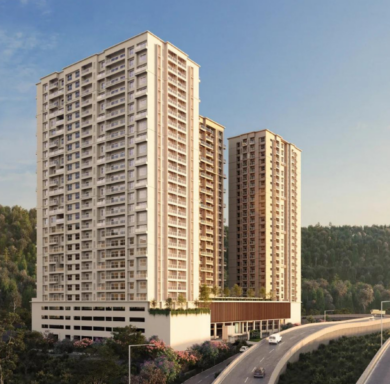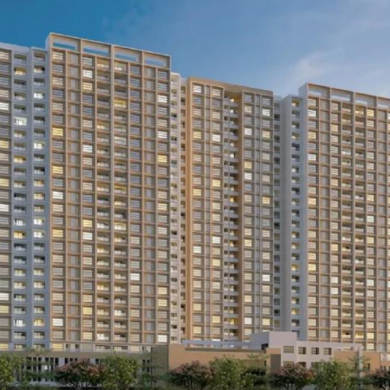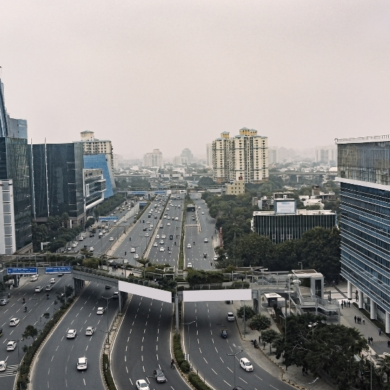
A home loan is a financial product aiding property purchase. Types include fixed, floating rates, construction, improvement, land purchase, extension, NRI, and government schemes like CLSS, providing tailored solutions for diverse housing needs.
Obtaining a home loan in India is a vital financial choice whether purchasing a new home or modifying an existing one. It enables people to purchase a home when they otherwise would not be able to. Additionally, it permits individuals to release a portion of their financial resources for use in other endeavours. A home loan provides security to the lender and assurance that the borrower will be able to repay the loan in full. Additionally, house loans in India give borrowers the chance to get lower interest rates and assist in raising their credit ratings.
The desire to purchase a home is something that many individuals have. However, purchasing a home requires a large financial commitment, and not everyone can afford to do it on their own. There are many kinds of home loans in India, and they are a well-liked method of financing property purchases. Here, we explore the various kinds of home loan options in India.
Table of Contents
What is a Home Loan?
A home loan is an amount that is financed by a bank or other financial institution and repaid in EMIs (Equal Monthly Installments). The lender will be allowed to seize the asset if the borrower is unable to repay the debt.
Basic Types of Home Loans
-
Fixed-Rate Home Loans
This type of loan has an interest rate that stays the same despite changes in repo rates. The interest rates are accepted and sanctioned. When the loan is accepted and sanctioned by the bank, the interest rate is decided. The amount of this loan is not impacted by inflation rates.
Borrowers who choose fixed-rate home loans primarily do so because they are at ease with predictable and regular monthly EMI payments. The fixed-rate loan interest is influenced by the loan duration and the current interest rate. Even while fixed interest rates are unaffected by economic fluctuations, variable interest rates are also impacted as the economy expands.
Benefits of Home Loans with Fixed Interest Rates
Consistent Payments: Its ability to guarantee borrowers’ payments is one of its key benefits. As a result, individuals can plan and budget more successfully since they are aware of the exact monthly payment they must make.
Protection Against Rising Rates: It is advised to obtain a fixed rate loan if the borrower or their financial adviser anticipates a long-term increase in market interest rates. The borrower’s responsibility will not change regardless of whether market rates do in fact increase.
-
Floating-Rate Home Loans
Your home loan’s interest rate varies according to market movements depending on the lender’s benchmark rate. When a loan has a shorter duration, floating rates are somewhat cheaper than fixed rates.
Benefits of Floating Interest Rates
Reduced Initial Outflow: In this case, the starting sum is typically lower than it would be for a fixed-rate loan. Especially in the early years of the loan when the paying capacity is smaller than that in the later years, this might make it simpler for borrowers to finance their monthly payments.
Potential Savings: Borrowers may be able to save money on interest payments if market rates decline throughout the course of the loan.
Flexibility: Borrowers can benefit from declining rates by refinancing at a cheaper rate or paying off their loans early.
Read More: Difference Between Fixed and Floating Interest Rate in Home Loan
Special Types of Home Loans in India
-
Home Construction Loans
The owner of a plot of land might apply for this form of home loan to cover the costs associated with building a new home. One can even avail this type of home loan to complete the construction of a house.
Due to the fact that the plot cost is also taken into account, this type of loan has a unique approval process. However, it must be noted that while applying for a home construction loan, the plot should have been purchased within a year of applying. So that the plot cost can also be included in the loan amount.Based on a ballpark calculation of the construction cost, the loan amount is chosen. The funds may be distributed in one lump sum or in successive increments.
Eligibility Criteria for Availing a Home Construction Loan
| Particulars | Salaried | Self-Employed |
| Age | 18 years to 65 years | 18 years to 65 years |
| Employment | Minimum two years of experience | Minimum five years of experience |
| Credit Score | 750 or above | 750 or above |
Documents Needed for Home Construction Loan
- Proof of Age: Birth certificate, 10th standard marksheet
- Proof of Address: Voter ID card, Aadhaar Card, Utility Bills
- Proof of Income: Salary slip, Income Tax Returns (ITR) details
- Identification proof: PAN card, Voter ID, Passport
- Property related documents
- Existing loan documents (Optional)
-
Home Improvement Loans
You may use this kind of home loan to remodel, repair, or furnish your house. Loans for home improvements are particularly common because of their cheap interest rates.
In this situation, the payback period is often shorter. This is due to the loan amount being considerably less for a house improvement than for the purchase of a whole home. However, the interest rate on loans for home improvements is frequently the same as the interest rate on a standard property loan.
Eligibility Criteria for Home Improvement Loan
The requirements that an application must fulfil in order to be qualified for a home improvement loan are listed below. Various lenders may have different requirements.
| Age | 18 – 65 years |
| Employment | Salaried, Self-employed Professionals and Non-Professionals |
Documents Required For Home Improvement Loan
Here’s a list of the essential documents required while applying for a home renovation loan. However, this could change slightly depending on the lender.
- Documentation of age (birth certificate, Grade 10 marks card, etc.)
- Copies of passports, utility bills, voter identification cards, etc. as address proof
- Income documentation (pay stubs and ITR information)
- Original Property Title Deeds
- Renovation Price Estimate
-
Land Purchase Loans
One can avail a land purchase loan when the individual wants to purchase a plot of land either for constructing an independent house or for investment purposes. In contrast to home loans which are given for the purchase of a built property, a land purchase loan or a plot loan is only given for the purchase of the land.
Eligibility Criteria for Land-Purchase Loans
The requirements that an applicant must fulfil in order to be qualified for a land-purchase loan are listed below:
|
Age |
18 – 65 years |
| Employment |
Salaried, Self-employed Professionals and Non-Professionals |
Documents Required for Land-Purchase Loans
- Age Proof (Birth certificate, 10th grade marksheet, etc.)
- Address Proof (passport copy, utility bills, voter ID, etc.)
- Proof of Income (Salary slips and ITR)
- Existing Loan Documents (if any)
- Property-related Documents
-
Home Extension/Renovation Loans
You can select this financing option if you want to increase the size of your house. Financial organisations often disburse funds under this type of loan that might equal up to 90% of the anticipated cost of construction. It differs from a loan for home improvements in that the sanction amount is based on the loan amount and the Loan-To-Value ratio.
Eligibility Criteria for Home Expansion or Extension Loans
|
Age |
Employment |
| 18 years to 65 years |
Salaried, Professionals, Non-Professionals, and Self Employed |
Documents Needed for a Home Renovation/Extension Loan
Here’s a list of the documents required for applying a home purchase loan:
- Proof of Age: Birth certificate, Std.10 marksheet
- Proof of Address: Voter ID card, Aadhar Card, Utility Bills
- Proof of Income: Salary slip, Income Tax Returns (ITR) details
- Identification proof: Permanent Account Number (PAN) card, Voter ID, Passport
- Existing loan documents
- Home extension or property related documents
-
Balance Transfer Home Loans
When a person wishes to transfer their house loan from one bank to another bank due to factors like cheaper interest rates or better services provided by the other bank, they can use this option. This is done so that the remaining debt may be repaid at the new, reduced interest rates that the other lender is offering.
Eligibility Criteria for Balance Transfer
Some of the standard requirements that an applicant must satisfy in order to be qualified for a home loan balance transfer are listed below. These requirements, however, could differ slightly between lenders.
|
Age |
18 – 65 years |
| Employment |
Salaried and Self-employed Individuals with clear past record of timely repayments with the previous lender |
Documents Required for Balance Transfer
- Age Proof (Birth certificate, Class 10 marks sheet, etc.)
- Address Proof (Copy of passport, Utility bills, Voter ID, etc.)
- Income Proof (Salary slips and ITR details)
- Bank statement showing repayment of ongoing loan
- Property-related Documents
- Loan statement and list of property documents in possession of the existing lender
-
NRI Home Loans
The requirements and application process for this kind of loan are distinct from those for other types since it has been specifically created to assist non-resident Indians in purchasing residential property in India. NRI loans are often offered by the majority of commercial and public sector banks as a part of their home loan portfolio.
Eligibility Criteria for NRI Home Loans
The following conditions must be met in order to qualify for NRI home loans:
|
Age |
18 – 60 years |
| Employment |
Salaried Individuals or Self-Employed with at least 2 years of work experience in present company |
Documents Required for NRI Home Loans
The list below covers all the documents required for availing an NRI home loan. However, lenders may modify these requirements slightly.
- Passport and work visa copy
- Proof of valid work permit
- Copy of employment contract
- Current overseas residential proof
- Salary slips of past three months
- Salary account statement for past six months
- General power of attorney
- Last year ITR except for NRIs in Middle East nations and Merchant Navy Employees
- Property papers
-
Bridged Loans
People who desire to acquire another house by selling their current one take out this form of home loan. As long as the old property is not sold off, the fund assists in meeting short-term money requirements such as the down payment for a new home. Bridge loans often have higher interest rates and a two-year maximum payback period.
Eligibility Criteria for Bridge Loan
|
Age |
18 – 70 years |
| Eligible customers |
All property owners and co-applicants |
Documents Required for Balance Transfer
- Age Proof (Birth certificate, Class 10 marks sheet, etc.)
- Address Proof (Copy of passport, Utility bills, Voter ID, etc.)
- Income Proof (Salary slips and ITR details)
- Bank statement showing repayment of ongoing loan
- Property-related Documents
- Loan statement and list of property documents in possession of the existing lender
-
Home Loan Against Investments Like LIC, Mutual Funds, Etc.
The amount of loan you may be able to receive against the assets of your mutual fund will be significantly influenced by the sort of mutual fund scheme you have invested in as well as the financial institution from which you will borrow. Many banks will only provide loans in exchange for a certain selection of mutual fund plans.
Loans against mutual funds are subject to specific restrictions, just like any other sort of loan. Often, there are maximum and minimum loan amounts set by banks. A major advantage of a loan secured by mutual funds is the reduced interest rate offered in comparison to personal or credit card loans. This is due to the fact that loans secured by mutual funds are supported by collateral.
Mutual fund units that are pledged in order to get a loan remain invested in the market. This is so that the bank has the authority to sell the mutual fund units solely in the event of your default when you pledge your mutual fund units to the bank. However, your assets remain market-linked and you continue to get returns on them so long as you do not default.
Must Read: Home Loan Down Payment – The Ultimate Guide
Government-Sponsored Scheme for Home Loans in India
-
Pradhan Mantri Awas Yojana (PMAY)
The Indian government unveiled the Pradhan Mantri Awas Yojana (PMAY) program in 2015, in a bid to accomplish its slogan of ‘Housing for All by 2022’. This scheme was brought to life for customers in Lower Income Groups (LIG), Economically Weaker Sections (EWS), and Middle-Income Groups (MIG).
Income Criteria as per PMAY
One must fall into one of the following income levels in order to profit from the PMAY programme:
|
Sub-Categories |
Household Income (per annum) |
|
Economically Weaker Sections (EWS) |
Up to ₹3 Lakhs |
|
Lower-Income Group (LIG) |
₹3 Lakhs – ₹6 Lakhs |
|
Middle-Income Group-I (MIG-I) |
₹6 Lakhs – ₹12 Lakhs |
|
Middle-Income Group-II (MIG-II) |
₹12 Lakhs – ₹18 Lakhs |
Eligible Loan Amount and Subsidy Under PMAY
Depending on the income category a person belongs to, they may be entitled for a certain amount of credit under the PMAY programme. To gain an estimate of how much loan one is entitled for, see the following table:
|
Income Group |
Loan Amount |
|
Economically Weaker Section |
Up to ₹6 Lakhs |
|
Lower-Income Group |
Up to ₹6 Lakhs |
|
Middle-Income Group-I |
Up to ₹9 Lakhs |
| Middle-Income Group-II |
Up to ₹12 Lakhs |
Furthermore, the income group of the borrower directly affects the subsidy on the interest rate.
|
Income Group |
Subsidy on Interest Rate |
|
Economically Weaker Section |
6.40% |
|
Lower-Income Group |
6.40% |
|
Middle-Income Group-I |
4.00% |
|
Middle-Income Group-II |
3.00% |
-
Credit-Linked Subsidy Scheme (CLSS)
One of the four verticals of the Pradhan Mantri Awas Yojana-Urban (PMAY-U) is the Credit Linked Subsidy Scheme (CLSS), which offers interest subsidies on home loans taken by eligible members of the Economically Weaker Section (EWS) and Low-Income Group (LIG) for the purpose of purchasing, re-purchasing, building or adding to their existing housing stock. The Middle Income Group (MIG) CLSS became operating on January 1, 2017, originally for one year, and was later extended through March 31, 2021.
CLSS Scheme Details:
|
Particulars |
EWS | LIG | MIG I |
MIG II |
|
Scheme Duration |
17.06.2015 to 31.03.2022 | 01.01.2017 to 31.03.2021 | ||
|
Household Income (Rs.) |
Upto 3,00,000/- | 3,00,001/- to 6,00,000/- | 6,00,001/- to 12,00,000/- |
12,00,001/- to 18,00,000/- |
|
Interest Subsidy (% p.a.) |
6.5% | 4.0% |
3.0% |
|
|
Maximum Loan Tenure |
||||
|
20 Years |
||||
|
Eligible Housing Loan Amount for Interest Subsidy (Rs)* |
6,00,000/- | 9,00,000/- |
12,00,000/- |
|
|
Dwelling Unit Carpet Area (Up to) in sq. m |
Up to 30# sq.m | Up to 60# sq.m | Upto 160 sq.m |
Upto 200 sq.m |
| Discounted Rate for Net Present Value (NPV) calculation |
9% |
|||
Through Primary Lending Institutions, recipients get an upfront interest subsidy that reduces their effective housing loan and Equated Monthly Instalment (EMI). The interest subsidy’s Net Present Value (NPV) is computed using a 9% discount rate.
Credit Linked Subsidy Scheme for EWS/LIG
Beneficiaries of the Economically Weaker Section (EWS) and the Low-Income Group (LIG) are entitled to an interest subsidy at the rate of 6.5% for a duration of 20 years or for the term of the loan, whichever is lower.
Only loans up to Rs. 6 lakhs are eligible for the credit-linked subsidy; any loans over that amount, if any, would have non-subsidized interest rates. For housing loans taken out for new construction as well as room additions, kitchen additions, bathroom additions, etc. to existing homes called incremental housing, credit-linked subsidies are available. For EWS and LIG, respectively, the carpet area of dwellings being built under this vertical of the Mission must be up to 30 m2 and 60 m2, respectively, in order to qualify for this credit-linked subsidy. The beneficiary is free to build a home with a greater space at their option, but the interest subsidy is only available up to the first Rs. 6 lakhs.
Credit-Linked Subsidy Scheme for MIG
The MIG CLSS includes two income ranges: MIG-I: Rs. 6,00,001 to Rs. 12,00,000 and MIG-II: Rs. 12,00,001 to Rs. 18,00,000. For loans up to Rs. 9 lakhs in MIG-I, an interest subsidy of 4% has been offered: for loans up to Rs. 12 lakhs in MIG-II, an interest subsidy of 3% has been offered. 9% NPV over a maximum loan term of 20 years, or the actual term, whichever is shorter, is how the interest subsidy is computed. Housing loans that are more than Rs. 9 lakhs and Rs. 12 lakhs will not be eligible for subsidies. According to income eligibility, CLSS for MIG will fund the purchase or building of a home (including a repurchase) with a carpet area of 160 m2 for MIG-I and 200 m2 for MIG-II.
Tips for Choosing the Right Home Loan
-
Compare Interest Rates
Be careful since loans with identical interest rates are not all equal. One loan could be more expensive than another due to additional factors like points, charges, etc. You must be aware of and comprehend the many elements that affect the loan’s cost.
-
Check Credit Score
The best loan offers are made to people with good credit. Because your prior financial conduct indicates that you are a responsible borrower, a good credit score reassures the lender that you are a reliable borrower.
-
Understand Loan Processing Fees and Other Charges
Certain administrative costs associated with processing and authorising your loan must be covered by the bank. This is often a small fee that ranges from 0.5% to 2.50% of the total loan amount and is minimal in most cases.
-
Consider Prepayment Options
You can prepay your mortgage loan (in full or in part) before the loan term expires thanks to this option. When customers have more money, they frequently select prepayment.
Final Thoughts
The choice to purchase a house is a significant one, and selecting the best form of mortgage is crucial to ensuring a simple and straightforward repayment process. Potential homebuyers may make an informed decision and select the best home loan option for their requirements by being aware of the many types of home loans offered in India and according to the suggestions stated in this article.
FAQ’s:
1. Which type of home loan is the best in India?
In India, SBI Home Loan is regarded as the top bank for home loans. Starting at 8.55% p.a., house loans from the State Bank of India provide some of the finest and most enticing interest rates available in India. A loan extension option with a maximum 30-year term ensures an easy payback schedule. The loan for the purchase of a new or an existing house is the most common sort of loan. It is widely accessible and is provided in various forms by several banks.
2. What type of loan is a home loan?
The loan for the purchase of a new or pre-owned house is the most common sort of loan. This loan is widely accessible and is provided in various forms by several banks. The interest rate is often between 9.85% and 11.25% and can be either floating or fixed.
3. Which type of home loan is the most stable?
For those who are unclear of which home loan to choose, the floating loan interest rates are the best option. It is important to keep in mind that fixed home loans have a prepayment penalty due to the reduced risk of interest rate loss. Floating loans do not have prepayment penalties.
4. Do we get home loan on the 100% value of the property?
No, a 100% home loan is not available from any lender, including banks and housing finance companies (HFC). Approximately 75% to 90% of the cost of the property is financed by lenders, leaving 10% to 25% for you to pay.
5. Which loan has zero interest rate?
If the borrower adheres to the strict deadline by which the full sum must be paid, a zero-interest loan is one where only the principal balance must be returned. There are severe consequences for missing the deadline.
6. Which bank provide the lowest interest for home loan in India?
The Central Bank of India, a public sector lender, charges home loans an interest rate of 8.55 percent.
7. What is the difference between fixed and floating home loan?
Home loans with fixed home loan interest rates keep a steady interest rate that doesn't fluctuate with market circumstances. Home loan interest rates that fluctuate with the market are called floating rates.
8. What type of home loan is the best for new homebuyers?
Compared to a conventional loan, a Federal Housing Administration (FHA) loan requires less of a down payment and is simpler to qualify for. FHA loans are great for first-time homeowners since you can put down as little as 3.5% of the purchase price in addition to having more lenient credit standards and cheaper upfront loan expenses.










